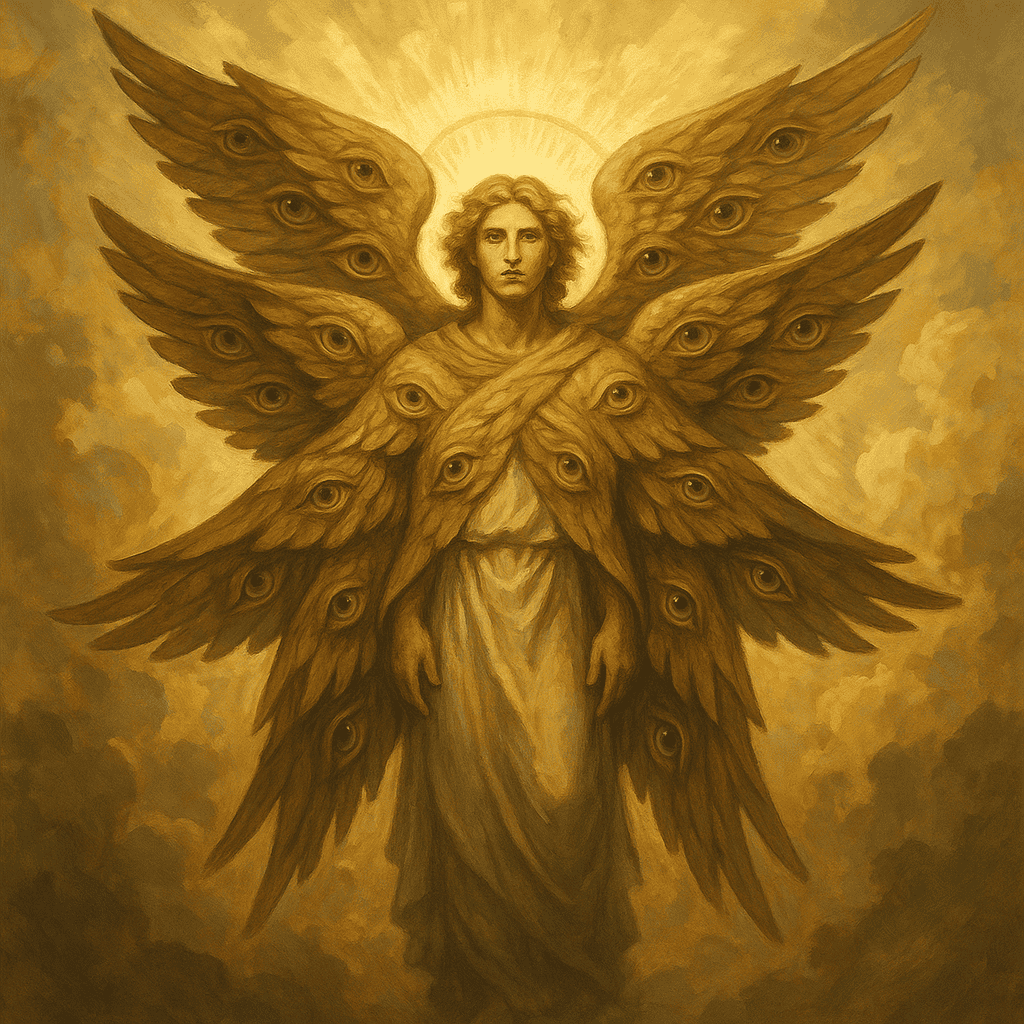Biblically Accurate Angels: Unveiling the True Heavenly Beings
Biblically accurate angels are far from the gentle, harp-playing figures often depicted in art and media. The Scriptures describe them as awe-inspiring, formidable beings with multiple wings and eyes, serving as messengers and warriors of God. Understanding their true nature challenges our perceptions and deepens our appreciation for the divine.

The Bible describes angels in ways that challenge our modern imagination—some have multiple faces, others are covered in eyes, and some are so overwhelming in their glory that people fall down in fear at the sight of them. If we want to understand what angels really are, we have to let go of popular imagery and see what Scripture actually says.
So let’s walk through what the Bible teaches about angels, their different types, their roles, and why we don’t become angels when we die.
Misconceptions vs. Biblical Reality
Popular culture has completely reshaped how we think about angels. We see them in movies, paintings, and Christmas decorations as beautiful humans with wings. But in Scripture, angels are never described as female, nor do they have halos. When they appear in human form, they are usually mistaken for men (Genesis 18:2, Genesis 19:1). And when they appear in their heavenly forms, they are terrifying.
Biblically accurate angels serve specific purposes. Some are messengers, some are warriors, and others are throne-room beings who never leave the presence of God. So let’s take a look at what the Bible actually says about them.
The Seraphim: Fiery, Six-Winged Beings
One of the most awe-inspiring angelic beings in Scripture is the seraphim. The only biblical description of them comes from Isaiah’s vision of God’s throne:
“Above him stood the seraphim. Each had six wings: with two he covered his face, and with two he covered his feet, and with two he flew. And one called to another and said: ‘Holy, holy, holy is the Lord of hosts; the whole earth is full of his glory!’” (Isaiah 6:2-3, ESV).
The word seraph means “burning one,” suggesting that these beings shine with fiery brightness. Their six wings serve distinct purposes—two cover their faces in reverence before God, two cover their feet (perhaps a sign of humility), and two enable them to fly.
Their role? To worship God continually and declare His holiness. These are not chubby cherubs playing harps. These are powerful, awe-inspiring creatures who exist for one purpose: glorifying God.
The Cherubim: Multi-Faced Guardians of God’s Glory

Another type of angel that is nothing like what we imagine is the cherubim. Unlike the small, innocent-looking beings seen in art, cherubim are mighty, otherworldly creatures who guard God’s presence.
Ezekiel gives a shocking description of them:
“Each had four faces: the first was the face of a cherub, the second the face of a man, the third the face of a lion, and the fourth the face of an eagle. And the cherubim mounted up. These were the living creatures that I saw by the Chebar canal.” (Ezekiel 10:14-15, ESV).
They also have multiple wings and are covered in eyes all over their bodies (Ezekiel 10:12). These beings are often associated with God’s throne and His divine presence. In fact, cherubim were placed at the entrance of the Garden of Eden with a flaming sword after Adam and Eve were banished (Genesis 3:24).
The role of cherubim is to guard the presence of God and His holiness. They symbolize His power and authority, showing that nothing unholy can enter His presence.
Angels as Messengers in Human Form
Not all angels appear with an otherworldly appearance. When angels are sent to interact with humans, they often appear as men.
For example, in Genesis 18, Abraham is visited by three men—two of whom are later identified as angels when they go to Sodom (Genesis 19:1). They looked so much like normal men that the people of Sodom didn’t even recognize them as supernatural beings.
In these cases, angels serve as messengers, delivering God’s word to His people. This is seen throughout Scripture—Gabriel, for instance, is sent to deliver messages to Daniel (Daniel 8:16) and to Mary announcing the birth of Christ (Luke 1:26-28).
The Archangel Michael: Heaven’s Warrior
Not all angels are messengers—some are warriors. The Bible gives Michael the title of archangel, meaning he holds a position of leadership over other angels.
“At that time shall arise Michael, the great prince who has charge of your people.” (Daniel 12:1, ESV).
“Now war arose in heaven, Michael and his angels fighting against the dragon.” (Revelation 12:7, ESV).
Michael’s role is to fight for God’s people and engage in spiritual warfare against Satan and his demons. He leads the armies of heaven and ensures God’s purposes are carried out.
Do Humans Become Angels When They Die?
One of the most common misconceptions is that when people die, they become angels. This is not biblical.
Here’s what the Bible actually teaches:
- Angels and humans are separate creations (Hebrews 1:14). Angels were made before humans and do not experience redemption as we do.
- Jesus said that in the resurrection, people will be like angels in that they do not marry (Luke 20:35-36), but He never says we become angels.
- Believers receive glorified bodies (1 Corinthians 15:40-44), not an angelic form.
Angels are servants of God, but humans are made in the image of God (Genesis 1:27). Our destiny is not to become angels, but to reign with Christ in eternity (2 Timothy 2:12).
Why Do Angels Look So Different in the Bible?
If angels sometimes look like men and other times have multiple wings, eyes, and faces, what’s going on?
The simple answer is: angels appear in different forms depending on their role.
- When delivering messages to humans, they often appear as men (Genesis 19:1).
- When seen in heaven, they have glorious, overwhelming appearances (Ezekiel 1, Isaiah 6).
- Some angels, like the seraphim and cherubim, never leave God’s presence and reflect His majesty.
Their appearance changes to match their function, but all angels are mighty servants of the Most High God.
What We Can Learn from Biblically Accurate Angels
So, what’s the takeaway from all this?

- Angels are not cute, soft creatures—they are powerful beings created to serve and worship God.
- Angels are not to be worshiped (Revelation 22:8-9).
- Humans do not become angels—our future is even greater, reigning with Christ.
- God is the focus of angelic worship, and He should be the focus of ours too.
- Angels never appear as women.
Angels Are Always Referred to with Masculine Pronouns
Throughout the Bible, angels are always identified with male pronouns (he, him), never female ones. Here are some examples:
- Gabriel speaking to Mary:
“And the angel said to her, ‘Do not be afraid, Mary, for you have found favor with God.’” (Luke 1:30, ESV). - Angels appearing to Lot in Sodom:
“The two angels came to Sodom in the evening, and Lot was sitting in the gate of Sodom. When Lot saw them, he rose to meet them.” (Genesis 19:1, ESV). - Michael, the Archangel, is also male:
“But Michael, one of the chief princes, came to help me.” (Daniel 10:13, ESV).
The word “princes” is a male designation, reinforcing that angels are always seen in masculine terms.
Why Is Gabriel Clearly a Masculine Name?
- The Name Itself Is Masculine
- Gabriel (גַּבְרִיאֵל, Gavri’el in Hebrew) is composed of two parts:
- Gever (גֶּבֶר) – meaning man, strong man, or warrior
- El (אֵל) – meaning God
- The name literally means “God is my strength” or “Mighty man of God”, which aligns with a masculine identity.
- Gabriel (גַּבְרִיאֵל, Gavri’el in Hebrew) is composed of two parts:
- Gabriel Is Referred to with Masculine Language
- In Daniel 9:21, Daniel refers to him as “the man Gabriel” (ha-ish Gabriel in Hebrew).
- The Greek text in Luke 1:19 and Luke 1:26 uses masculine forms when referring to Gabriel.
- Angels in general are always given masculine descriptions in Scripture.
- No Historical or Biblical Record of Gabriel as a Female Name
- There are no female Gabriels in the Bible.
- The name Gabriella (a feminine form) is a modern adaptation and does not appear in biblical or ancient Jewish texts.
Conclusion
Gabriel is a male name, used exclusively for the angel who delivers God’s messages. The name itself and the way he is described in Scripture confirm that Gabriel always appears as a male figure, reinforcing the broader biblical pattern that angels are described in masculine terms.
Rather than shaping our beliefs based on movies, paintings, or tradition, we should look to Scripture. The reality of biblically accurate angels is far more awe-inspiring than anything Hollywood has imagined.
Why All of This This Matters
Understanding biblically accurate angels isn’t just about correcting false imagery. It’s about seeing God’s power, majesty, and holiness more clearly.
The next time you hear someone say, “Heaven just gained another angel,” gently remind them—our hope isn’t in becoming angels. Our hope is in eternal life with Christ, where we will worship alongside the angels but as redeemed children of God.
Let me know how you feel about this topic! If you’d like to see some video on various Christian topics, check out my YouTube channel.
Would you like to know more about what the Bible teaches on election? Check out my free pamphlet Chosen By Grace.
Blessings in Christ,
Wally
Walt Roderick is a Christian writer who cares more about biblical clarity than online applause. He writes to strengthen believers and confront spiritual drift.






